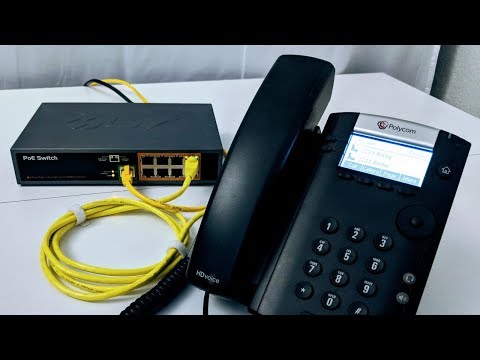How does an ONU handle network synchronization in a distributed environment?
In a distributed network environment, network synchronization is crucial for ensuring the smooth and efficient functioning of the network. Optical Network Units (ONUs) play a vital role in handling network synchronization in such environments. As an authority on the subject, let me take you through the intricacies of how an ONU handles network synchronization in a distributed environment.
1. Understanding the basics of network synchronization
Network synchronization refers to the process of aligning the timing and frequency of various network elements to ensure accurate and reliable data transmission. In a distributed network, where multiple ONUs are connected to a central Optical Line Terminal (OLT), synchronization becomes even more critical to avoid data loss or corruption.
2. Time and frequency synchronization
ONUs handle both time and frequency synchronization in a distributed environment. Time synchronization involves aligning the clocks of different network elements, while frequency synchronization ensures that the transmission rates of the ONUs are synchronized with the OLT. This synchronization is crucial for maintaining the integrity of the transmitted data and avoiding delays or packet loss.
3. Synchronous Ethernet (SyncE)
SyncE is a widely used method for achieving network synchronization in distributed environments. It utilizes Ethernet physical layer and data link layer mechanisms to distribute synchronization signals from the OLT to the ONUs. The ONUs receive these signals and adjust their internal clocks accordingly, ensuring accurate timing and frequency synchronization.
4. Precision Time Protocol (PTP)
PTP is another synchronization protocol commonly used by ONUs in distributed environments. It provides precise time synchronization by exchanging timing information between the OLT and the ONUs. PTP uses an iterative process to adjust the clocks of the ONUs, minimizing any time discrepancies and ensuring accurate synchronization.
5. Network Time Protocol (NTP)
NTP is a synchronization protocol that is commonly used in distributed networks where precise time synchronization is not critical. Unlike PTP, which focuses on microsecond-level accuracy, NTP provides synchronization at the millisecond level. ONUs can utilize NTP to synchronize their clocks with a centralized time server, ensuring reasonable accuracy for most applications.
6. Resilience and fault tolerance
In a distributed network environment, where multiple ONUs are connected to a single OLT, it is crucial to ensure resilience and fault tolerance in network synchronization. ONUs should be able to handle network disruptions, such as link failures or OLT outages, without affecting synchronization. This can be achieved through redundancy mechanisms and backup synchronization sources.
7. Monitoring and management
ONUs play an active role in monitoring and managing network synchronization in a distributed environment. They continuously monitor the synchronization status and quality, and report any anomalies or deviations to the OLT. This allows network administrators to proactively identify and resolve synchronization issues, ensuring the smooth operation of the network.
In conclusion, ONUs play a vital role in handling network synchronization in a distributed environment.
Demystifying the Activation Process of Optical Network Units (ONU): A Comprehensive Guide
Demystifying the Activation Process of Optical Network Units (ONU): A Comprehensive Guide is a valuable resource for anyone seeking to understand the intricate workings of ONUs and the activation process. This comprehensive guide provides in-depth information on various critical aspects of the topic. One such aspect is how an ONU handles network synchronization in a distributed environment.
1. Importance of network synchronization: Network synchronization is crucial for the proper functioning of an optical network. It ensures that all ONUs within the network are in sync and can effectively communicate with each other. Without synchronization, data transmission may be disrupted, leading to inefficiencies and errors in the network.
2. Distributed environment challenges: In a distributed environment, where ONUs are spread across different locations, achieving network synchronization becomes more challenging. Factors like varying distances, signal delays, and different network conditions can impact synchronization accuracy.
3. Timing and synchronization protocols: To address the challenges of network synchronization in a distributed environment, ONUs rely on timing and synchronization protocols. These protocols ensure that all ONUs have a common time reference and can coordinate their activities effectively.
4. Precision Time Protocol (PTP): PTP is one of the widely used timing protocols for network synchronization. It utilizes timestamps and precise timing measurements to synchronize ONUs. PTP allows for high accuracy synchronization, even in distributed environments with varying network conditions.
5. SyncE: SyncE (Synchronous Ethernet) is another synchronization protocol commonly used in ONUs. It leverages Ethernet technology to distribute synchronization signals across the network. SyncE provides a cost-effective solution for achieving network synchronization in distributed environments.
6. ONU synchronization implementation: ONUs implement network synchronization by utilizing hardware and software components. Hardware components include precise clocks and synchronization interfaces, while software components involve synchronization algorithms and protocols.
7. Synchronization performance monitoring: To ensure optimal network synchronization, ONUs continuously monitor their synchronization performance. This involves measuring synchronization accuracy, detecting anomalies, and making necessary adjustments to maintain synchronization integrity.
By exploring the activation process of ONUs, this comprehensive guide sheds light on how these devices handle network synchronization in a distributed environment. Understanding these concepts is essential for network engineers, technicians, and anyone involved in the deployment and maintenance of optical networks.
Unraveling the Tech Jargon: Understanding the Distinctions between ONT and ONU in Telecommunication Networks
Unraveling the Tech Jargon: Understanding the Distinctions between ONT and ONU in Telecommunication Networks
Are you confused about the differences between ONT and ONU in telecommunication networks? Don’t worry, you’re not alone. Many people find the technical jargon in the field of telecommunications to be overwhelming and difficult to understand.
But fear not, as we delve into the intricacies of these terms, we will demystify their meanings and shed light on how they relate to network synchronization in a distributed environment.
1. What is an ONU?
An Optical Network Unit (ONU) is a device that is used in fiber optic networks to connect end-users to the network. It serves as the interface between the user’s premises and the service provider’s network. The ONU is responsible for converting optical signals into electrical signals that can be understood by devices such as computers, phones, and modems. It also handles network synchronization, ensuring that data is transmitted accurately and efficiently.
2. How does an ONU handle network synchronization in a distributed environment?
In a distributed environment, where multiple ONUs are connected to a central office, network synchronization becomes crucial for maintaining the integrity of data transmission. The ONU uses various mechanisms to achieve synchronization, such as synchronization messages and timing signals. These signals ensure that all ONUs in the network are synchronized and transmit data at the correct time, preventing data loss or corruption.
Additionally, the ONU may employ protocols such as ITU-T G.983.1 and ITU-T G.984.1 to enhance network synchronization. These protocols define the timing requirements and synchronization mechanisms for the ONU, ensuring that data is transmitted at the right time and in the correct sequence.
In summary, an ONU is a vital component in telecommunication networks, responsible for connecting end-users to the network and handling network synchronization. It ensures that data is transmitted accurately and efficiently, preventing data loss or corruption. Understanding the distinctions between ONT and ONU is crucial for anyone working in the field of telecommunications, as it enables them to navigate the complex world of network synchronization with ease.
Exploring the Diverse World of Optical Network Units (ONU) in Networking: A Comprehensive Breakdown of Types and Functionality
1. The Importance of Network Synchronization in a Distributed Environment
– Network synchronization is a critical aspect of ensuring smooth and efficient communication in a distributed environment.
– In a distributed network, multiple devices are connected and need to exchange data seamlessly.
– Network synchronization ensures that all devices are operating on the same clock, allowing for accurate data transmission and reception.
– Without proper synchronization, data packets may arrive at different times, leading to delays, data loss, or even network failures.
– In the context of Optical Network Units (ONUs), synchronization becomes even more crucial due to the high-speed and high-capacity nature of optical networks.
2. How an ONU Handles Network Synchronization
– ONUs play a vital role in handling network synchronization in a distributed environment.
– ONUs are responsible for receiving and transmitting data signals in optical networks.
– To achieve network synchronization, ONUs rely on various synchronization protocols such as IEEE 1588 Precision Time Protocol (PTP) or Synchronous Ethernet (SyncE).
– These protocols ensure that all ONUs in the network are synchronized with a common clock reference.
– ONUs continuously exchange timing information with other network devices to maintain synchronization.
– They adjust their clocks based on the received timing information, minimizing any phase or frequency discrepancies.
– ONUs also monitor and compensate for any delay or jitter introduced in the network to maintain accurate synchronization.
– By effectively handling network synchronization, ONUs enable seamless and reliable communication in distributed environments.
3. Types of ONUs and Their Functionality
– There are different types of ONUs available in networking, each with its own unique functionality.
– Passive Optical Network (PON) ONUs: These ONUs are commonly used in fiber-to-the-home (FTTH) networks and provide high-speed internet access to end-users.
– Gigabit Passive Optical Network (GPON) ONUs: GPON ONUs offer gigabit-level data transmission and support various services like voice, video, and data.
– Ethernet Passive Optical Network (EPON) ONUs: EPON ONUs are designed for Ethernet-based networks and provide high-speed connectivity for businesses and residential users.
– Time Division Multiplexing (TDM) ONUs: TDM ONUs allow for the transport of traditional TDM services over optical networks.
– Each type of ONU has its own specific functionality and features, catering to different network requirements and applications.
4. Conclusion
– Network synchronization is a crucial aspect of distributed environments, ensuring accurate and reliable data transmission.
– ONUs play a vital role in handling network synchronization in optical networks.
– Through the use of synchronization protocols, ONUs maintain accurate timing and minimize delays or data loss.
– Different types of ONUs offer varying functionalities, catering to the diverse needs of network applications.
How does an ONU handle network synchronization in a distributed environment? This is a question that many people have when it comes to understanding how optical network units (ONUs) operate in a distributed network environment. In this article, we will explore the various aspects of network synchronization and how an ONU manages it.
**What is network synchronization?** Network synchronization refers to the coordination of time and frequency between different network elements in order to ensure smooth and efficient data transmission. It is crucial in maintaining the integrity and reliability of the network. Without proper synchronization, data packets may be lost or delayed, leading to a degradation in network performance.
**Why is network synchronization important in a distributed environment?** In a distributed network environment, where multiple ONUs are connected to a central office or network controller, synchronization becomes even more critical. Each ONU must be synchronized with the central office to ensure accurate data transmission and prevent collisions or conflicts among the ONUs. Without proper synchronization, the network may suffer from disruptions, reduced bandwidth, and increased latency.
**How does an ONU handle network synchronization?** ONUs utilize various synchronization methods to achieve network synchronization in a distributed environment. One common method is the use of timing protocols such as the Precision Time Protocol (PTP) or the Network Time Protocol (NTP). These protocols allow the ONUs to synchronize their internal clocks with the central office or network controller, ensuring that all data transmissions are properly timed.
Additionally, ONUs may also rely on synchronization messages or signals sent by the central office or network controller. These messages provide timing information that the ONUs can use to adjust their internal clocks and maintain synchronization with the network.
**Can an ONU synchronize with multiple central offices or network controllers?** Yes, an ONU can synchronize with multiple central offices or network controllers, depending on the network architecture and requirements. This is often achieved through the use of synchronization hierarchy, where a higher-level synchronization source provides timing information to multiple lower-level ONUs.
**Conclusion** In a distributed network environment, network synchronization is crucial for maintaining the overall performance and reliability of the network. ONUs play a vital role in handling network synchronization by utilizing timing protocols, synchronization messages, and synchronization hierarchy. By ensuring accurate time and frequency coordination, ONUs contribute to seamless data transmission and optimal network operation. So, the next time you wonder how an ONU handles network synchronization in a distributed environment, remember the importance of synchronization in maintaining a well-functioning network.




Who needs network synchronization in a distributed environment? Just let the packets flow freely! #SyncFreeZone
Article: How does an ONU handle network synchronization in a distributed environment?
Comment: So, ONUs handle synchronization? Can they also handle my messy life? #ONUallpowerful